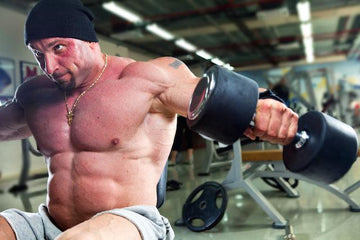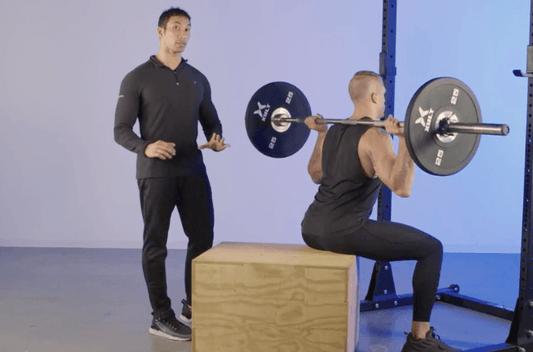

Front vs Back Squat: Which is King of Exercises?
Table of Contents
| Front vs Back Squat: Which is King? |
Squats are known as the “King of All Exercises” for the simple reason that no other leg exercise challenges the glutes, quadriceps, hamstrings, adductors, erectors, calves, abdominal stabilizers, etc quite the way squats do. The squat also relies on muscle activity at both the hip and ankle joints and recruits the abdominals and spinal erectors as well. Squatting will not only help you develop leg and hip strength, but also promote full-body mobility and stability. With the recently explosion of CrossFit, you will notice that Front Squats are a key component to the cross fit training program. If you were put the front squat in a head to head comparison against the back squat, which exercise would reign supreme? Although both squats effectively work the lowerback, hip, and leg muscles, there are slight variations in technique and muscular involvement. In addition, the maximum amount of weight an individual can lift varies between the two techniques, with increased capacity possible for the back squat.
 In 2009, researchers compared the muscle activation and mechanical stress placed on the knees of the front and back squat. The subjects had electrodes places all over their legs to measure the muscle activation when the front and back squat were performed. Ready for the shocker? EMG data showed no difference between front and back squats in any of the activities of muscles measured. Comparing just the muscle activation of the front and back squat averages, the researchers found that the back squat had higher hamstring activity (biceps femoris and semitendinous) compared to the front squat. The front squat however had greater activity of the lower quadriceps activity in two of the three muscles measured (vastus lateralis and rectus femoris), while vastus medialis activity was nearly identical in both squats. In addition, the front squats had higher back muscle (erector spinae) activity compared to back squats. The shear stress placed in the the knees were lower with the front squat as well. The researchers concluded that the front squat was as effective as the back squat in terms of overall muscle recruitment, with significantly less compressive forces and extensor moments. The results suggest that front squats may be advantageous compared with back squats for individuals with knee problems such as meniscus tears, and for long-term joint health. Although more weight can be lifted during the traditional back squat, its interesting that muscle activation in the legs are similar at a reduced work capacity. If you have knee injuries, than the front squat may be a better alternative than the back squat. In 2009, researchers compared the muscle activation and mechanical stress placed on the knees of the front and back squat. The subjects had electrodes places all over their legs to measure the muscle activation when the front and back squat were performed. Ready for the shocker? EMG data showed no difference between front and back squats in any of the activities of muscles measured. Comparing just the muscle activation of the front and back squat averages, the researchers found that the back squat had higher hamstring activity (biceps femoris and semitendinous) compared to the front squat. The front squat however had greater activity of the lower quadriceps activity in two of the three muscles measured (vastus lateralis and rectus femoris), while vastus medialis activity was nearly identical in both squats. In addition, the front squats had higher back muscle (erector spinae) activity compared to back squats. The shear stress placed in the the knees were lower with the front squat as well. The researchers concluded that the front squat was as effective as the back squat in terms of overall muscle recruitment, with significantly less compressive forces and extensor moments. The results suggest that front squats may be advantageous compared with back squats for individuals with knee problems such as meniscus tears, and for long-term joint health. Although more weight can be lifted during the traditional back squat, its interesting that muscle activation in the legs are similar at a reduced work capacity. If you have knee injuries, than the front squat may be a better alternative than the back squat. |
Gullett JC, Tillman MD, Gutierrez GM, Chow JW. A biomechanical comparison of back and front squats in healthy trained individuals. J Strength Cond Res. 2009 Jan;23(1):284-92.
MUSCLE MEDIA MAGAZINE FOR MEN
The premier source of training, nutrition, supplements, fat loss and health for men.

















